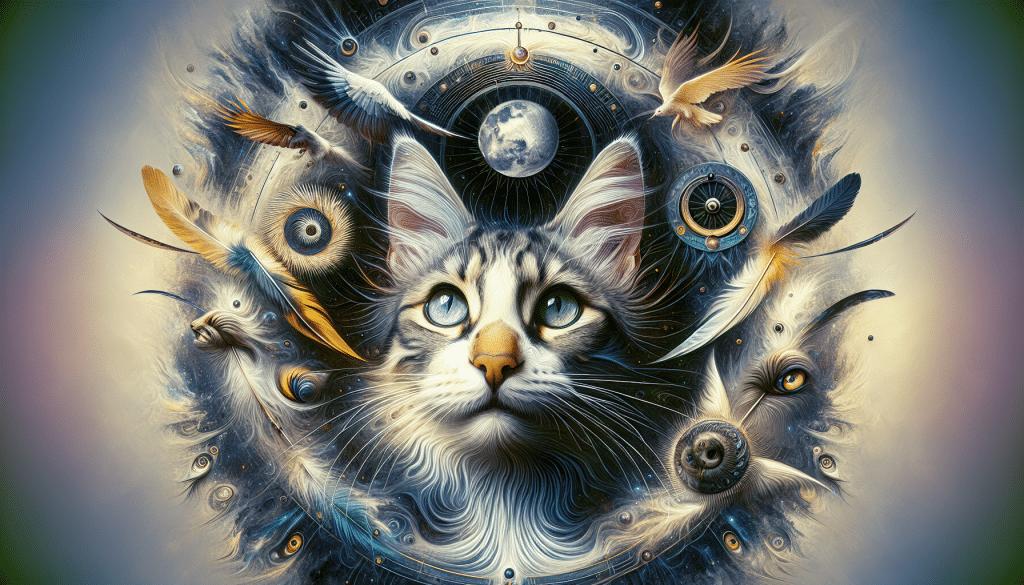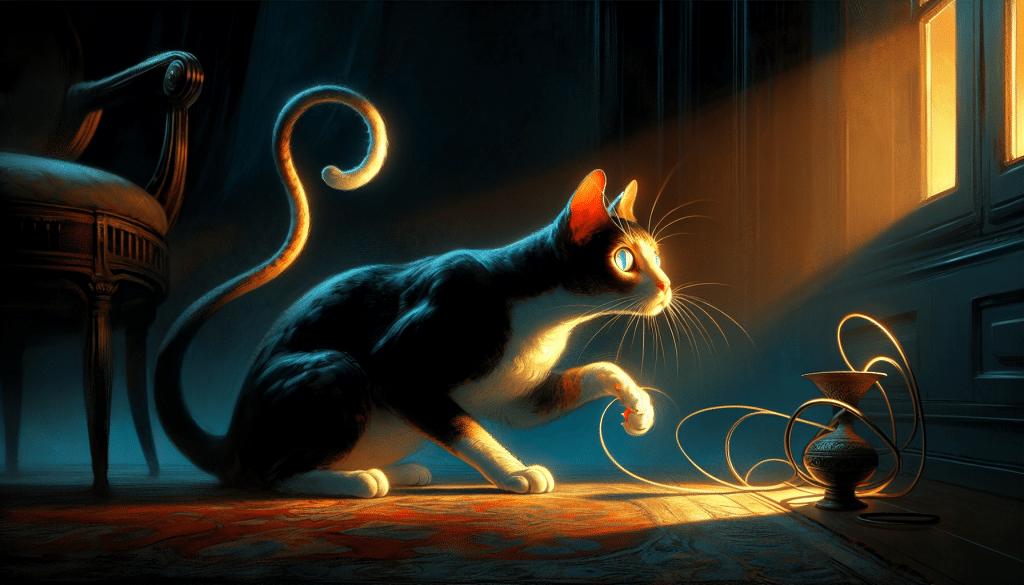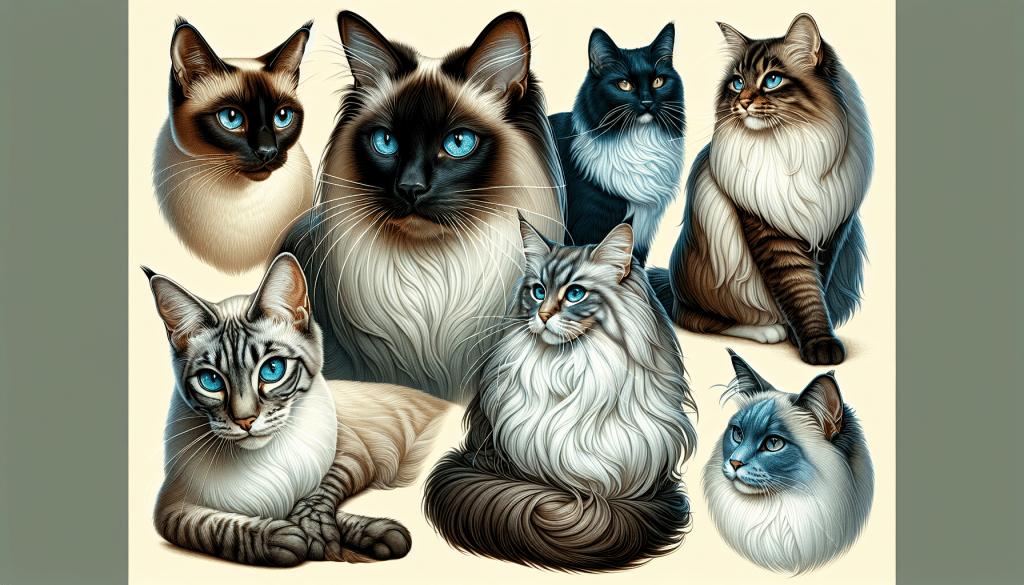Understanding Cat Behavior is an essential aspect of being a responsible cat owner. This article explores the various behaviors exhibited by cats, providing valuable insights into their communication methods, social interactions, and instinctual actions. By gaining a deeper understanding of cat behavior, you will be better equipped to create a harmonious environment for your feline companion, anticipate their needs, and ensure their overall well-being.

Understanding Basic Cat Behaviors
Cats are fascinating creatures with unique behaviors that can be both bewildering and intriguing. To truly understand cats, it is essential to delve into the nuances of their behavior. By observing and interpreting their body language, vocalizations, territorial behaviors, hunting instincts, and play patterns, we can gain valuable insights into their world.
Communication through Body Language
A cat’s body language is a crucial means of communication. Their tail positioning and movement can indicate different emotions. For instance, a raised vertical tail signifies a friendly and confident cat, while a low or tucked tail indicates fear or submission. Similarly, the orientation of a cat’s ears provides important clues about their mood. Erect ears convey attentiveness and curiosity, while flattened ears suggest fear or aggression.
Eye contact is another aspect of feline body language that deserves attention. Direct eye contact often implies a challenge or threat in the cat world, whereas slow blinking signals trust and relaxation. Additionally, changes in fur texture, such as piloerection (hair standing on end), can reveal emotions like fear, anger, or excitement.
Vocalizations and What They Signify
Cats have an extensive repertoire of vocalizations, each conveying a distinct meaning. Meowing is a common form of feline communication, but its purpose varies. A short and soft meow typically indicates a friendly greeting, while a loud and prolonged meow can suggest demands or distress. Purring, on the other hand, is usually associated with contentment, relaxation, or even healing.
Hissing and growling in cats serve as defensive mechanisms. If a cat feels threatened or cornered, they may emit these sounds to warn potential aggressors. Chirps and chatters, often observed during hunting or when a cat is interacting with humans, convey excitement or anticipation. The silent meow, where no sound is produced despite the cat’s mouth opening, can indicate frustration or a desperate plea for attention.
Territorial Behaviors and Space Usage
Territoriality is an innate behavior in cats, as they are instinctively driven to establish and defend their own space. Scent marking plays a crucial role in territorial communication. Through urine spraying and rubbing against objects, cats leave scent cues to mark their territory and communicate with other cats.
Scratching is another territorial behavior that also serves to maintain claws, stretch muscles, and leave visible marks. Understanding a cat’s need to scratch and providing appropriate scratching posts can help redirect this behavior away from furniture and other undesirable surfaces.
In multi-cat households, a hierarchical structure often emerges, with one cat assuming a dominant role. This hierarchy can influence resource access, social interactions, and even conflict resolution among cats. It is important for cat owners to recognize and manage the dynamics within their multi-cat households to prevent stress and aggression.
Hunting Instincts and Play
Cats are born hunters, and even our domesticated feline companions retain strong hunting instincts. Play serves as an outlet for these instincts, providing mental and physical stimulation. Kittens engage in play to refine their hunting skills, while adult cats use play to release energy and satisfy their prey drive.
Understanding play aggression is crucial to ensure harmonious interactions between cats and their human companions. Play aggression occurs when cats become overly excited during play and exhibit behaviors such as biting or scratching. Appropriate play techniques and redirecting their energy towards interactive toys can help mitigate this behavior.
Decoding Cat Body Language
To truly understand a cat, one must become fluent in the language of their body. By paying attention to their subtle cues, we can decipher their emotions, desires, and needs.
Tail Positioning and Movement
A cat’s tail serves as a significant indicator of their emotional state. A gently swaying tail usually signifies a relaxed and content cat. Conversely, a lashing or thrashing tail is a clear indication of agitation or anger. It is essential to consider other body language cues in conjunction with tail movements to accurately interpret a cat’s emotions.
Ear Orientation and What It Indicates
The orientation of a cat’s ears can reveal a lot about their current mood. When a cat’s ears are facing forward, they are typically alert and engaged. If the ears are flattened against the head, it is a sign of fear or aggression. Paying attention to ear position is essential when approaching or interacting with a cat to gauge their comfort level.
Eye Contact and Blinking Patterns
Eye contact in the feline world carries significant meaning. Direct, unblinking eye contact is often seen as a challenge or a threat. On the other hand, slow blinking is a gesture of trust and relaxation. By reciprocating a cat’s slow blink, we can convey our own sense of calm and help build a bond of trust and understanding.
Fur Texture Changes During Different Emotions
A cat’s fur texture can undergo noticeable changes in response to various emotions. When a cat’s fur stands upright, it is known as piloerection or “raised hackles.” This reaction occurs when the cat feels threatened or aroused. Conversely, when the cat’s fur lies flat against their body, it signifies a relaxed and content state. Understanding these variations in fur texture can provide valuable insights into a cat’s emotional state.

Cat Vocalizations and Their Meanings
Understanding Meows and Purrs
Meowing is one of the most common vocalizations cats use to communicate with humans. The frequency, tone, and intensity of meows can convey different messages. Short and soft meows are often associated with greetings or requests for attention, while long and loud meows may indicate hunger, discomfort, or distress.
Purring, on the other hand, is a unique vocalization that cats produce when they are content and relaxed. It is not limited to positive emotions, as cats may also purr when they are in pain or experiencing stress. Recognizing the context in which a cat purrs is essential in understanding their well-being and emotional state.
Hissing and Growling as Defense Mechanisms
Hissing and growling are defensive vocalizations that cats employ when they feel threatened or afraid. These sounds serve as warning signals to potential aggressors, indicating that the cat is ready to defend itself if necessary. It is crucial to respect a hissing or growling cat’s boundaries and provide them with space until they feel safe and secure.
Chirps and Chatters: Communication with Humans and Hunting Behaviors
Chirping and chattering are distinct vocalizations that cats often exhibit during moments of excitement or anticipation. These sounds are particularly common when cats observe birds or other prey animals. Chattering is thought to be an instinctual behavior related to hunting, and it is believed that cats create these sounds as a frustrated response to their inability to catch their desired prey.
The Silent Meow and Its Implications
Occasionally, cats may open their mouths to meow, but no sound emanates. This behavior is known as the silent meow. The silent meow is often a result of a cat’s frustration, as they attempt to communicate their needs or requests. Understanding the context and accompanying body language can help decipher the unspoken message behind a silent meow.
Territorial Marking and Establishing Dominance
Cats are territorial animals, and they use various methods to mark and establish their territory.
The Role of Scent Marking
Scent marking is a fundamental behavior among cats. They leave scent cues through urine spraying, rubbing against objects, and scratching. These scents contain pheromones that convey vital information to other cats, such as sexual readiness, territorial boundaries, and individual identity. By marking their territory with scent, cats establish ownership and communicate their presence to others.
Scratching as a Way to Claim Territory
Scratching is not solely a means to care for a cat’s claws; it also serves as a territorial marking activity. When a cat scratches, they leave both visual and scent marks that communicate their presence to other cats. Providing appropriate scratching surfaces and redirecting this behavior away from furniture can help prevent unwanted territorial marking.
The Hierarchy within Multi-cat Households
In households with multiple cats, a social hierarchy often emerges. This hierarchy determines access to resources, social interactions, and even conflict resolution. The establishment of dominance and submission relationships helps maintain social order and minimize tension among cats. It is important for cat owners to monitor and manage the dynamics within their multi-cat households to ensure a peaceful coexistence.
How to Prevent Unwanted Marking Behaviors
Unwanted marking behaviors can be prevented through various strategies. Providing an adequate number of litter boxes, ensuring cleanliness, and placing them in strategic locations can help deter inappropriate urination. Neutering or spaying cats can also reduce marking behaviors by minimizing their motivation to establish territory. Additionally, incorporating environmental enrichment and ensuring a stress-free environment can help alleviate marking behaviors.

Feeding Behaviors and Preferences
Feeding plays a significant role in a cat’s behavior and overall well-being.
The Impact of Feeding on Domestic Cat Behavior
Feeding habits can greatly influence a cat’s behavior. Establishing a consistent feeding routine contributes to a sense of security and predictability for cats. Mealtime can be an opportunity for owners to bond with their cats and build trust. Feeding habits should be considered when addressing behavioral issues or introducing changes in the cat’s environment.
Understanding Finicky Eating Habits
Cats are notorious for their finicky eating habits. This behavior stems from their evolutionary instincts as strict carnivores with a specific preference for fresh prey. Cats may be reluctant to try new foods or reject specific textures and flavors. Understanding a cat’s individual preferences and providing a varied and nutritionally complete diet can help address finicky eating habits.
The Practice of Caching Food
Caching food is an innate behavior in cats. It is a reflection of their hunting instincts and their need to secure and store food for future consumption. This behavior can be observed even in domesticated cats, who may hide or bury their excess food as a way to mimic their natural behaviors. Providing interactive feeders or puzzle toys can stimulate this natural behavior and enhance a cat’s mealtime experience.
How Cats Use Food to Communicate and Establish Social Bonds
Sharing food is a significant social behavior in cats. For feral or stray cats, communal feeding acts as a means of building social bonds and maintaining group cohesion. In multi-cat households, observing cats engaging in simultaneous or alternating feeding can indicate a sense of security and companionship. By recognizing and accommodating this social feeding behavior, cat owners can enhance their cats’ overall well-being.
Cats and Their Social Structure
Understanding a cat’s social structure is fundamental to comprehending their behavior and interactions with other cats and humans.
Recognizing Solitary versus Social Preferences
Cats are often portrayed as solitary animals, but they exhibit a range of social preferences. Some cats may thrive in multi-cat environments, engaging in play and forming strong bonds with both feline and human companions. Others may prefer a more solitary existence, requiring ample personal space and limited social interactions. Recognizing and respecting a cat’s social preferences can help create a harmonious and enriching environment.
Play Behavior among Kittens and Adults
Play behavior is essential for kittens’ physical and cognitive development. Through play, they learn vital hunting and social skills, allowing them to navigate the world around them. Adult cats also engage in play, albeit in different forms. Play serves as a means of exercise and mental stimulation, fostering overall well-being and reducing stress. Providing appropriate play opportunities for cats of all ages is crucial for their behavioral and emotional health.
Introduction to a New Pet or Family Member
Introducing a new pet or family member into a cat’s environment can be a challenging process. Cats are sensitive to changes, and a sudden disruption to their routine can cause stress and anxiety. Proper introductions, gradual interactions, and providing the necessary resources and safe spaces can promote positive associations and prevent conflicts. Patience and understanding are key during this transitional period.
Reading the Signs of Social Stress
Social stress can manifest in various ways in cats. It is crucial to recognize and interpret the signs to alleviate their distress. Common signs of social stress include aggression, hiding, excessive grooming, or overeating. By observing changes in behavior and addressing the underlying causes of stress, cat owners can help their feline companions establish more positive social interactions.
Cat Play and Enrichment
Play and enrichment are vital for maintaining a cat’s physical and mental well-being. Understanding their play preferences and providing appropriate toys and activities is crucial for a happy and fulfilled cat.
Why Play Is Important for Cats
Play is an integral part of a cat’s life, regardless of age. Play allows cats to release energy, engage their hunting instincts, and stay mentally stimulated. Through play, cats can maintain a healthy weight, reduce stress and boredom, and strengthen their bond with their human companions. Regular play sessions with appropriate toys are essential for a cat’s overall well-being.
Types of Toys and Games Cats Enjoy
Cats have individual preferences when it comes to toys, and it is beneficial to provide a variety of options. Some cats enjoy interactive toys that mimic prey, such as wand toys or toys that move unpredictably. Others may prefer puzzle toys or treat dispensers that engage their minds while rewarding them with a food incentive. Experimenting with different toy types can help find the perfect match for a cat’s unique play style.
How to Provide Enrichment for Indoor Cats
Indoor cats rely on their environment for stimulation and engagement. Environmental enrichment is essential to prevent boredom and promote a cat’s overall well-being. Providing opportunities for climbing, perching, scratching, hiding, and exploring can enrich their surroundings. Additionally, rotating toys, creating treasure hunts, or setting up feeding puzzles can help keep indoor cats mentally engaged and satisfied.
Understanding Play Aggression
Play aggression occurs when cats become overly excited during play and exhibit behaviors such as biting, scratching, or pouncing forcefully. It is essential to establish boundaries and redirect their energy towards appropriate toys or activities. Discouraging aggressive play and encouraging gentle interactions can help prevent play aggression and ensure enjoyable and safe play sessions.
Understanding Cats and Their Sleep Patterns
Cats are notorious for their love of sleep, spending a significant portion of their lives in slumber. Understanding their sleep patterns and preferences is essential for their overall well-being.
Why Cats Sleep So Much
Cats are crepuscular animals, meaning they are most active during dawn and dusk. However, they still require ample sleep and rest throughout the day. Cats are natural predators, and their sleeping patterns reflect their hunting behavior. Sleeping conserves energy for hunting and allows them to remain alert during their active periods.
The Phases of Cat Sleep
Cats experience two main sleep phases: rapid eye movement (REM) sleep and non-rapid eye movement (NREM) sleep. During REM sleep, cats experience vivid dreaming and muscle relaxation. They may twitch, chirp, or move their paws. NREM sleep, on the other hand, is a deeper and more restorative sleep state. Understanding these sleep phases can help determine if a cat’s sleep patterns are healthy and normal.
Choosing Safe and Comfortable Places to Sleep
Creating a safe and comfortable sleeping environment is crucial for a cat’s well-being. Cats generally prefer elevated spaces that provide security and a vantage point for observation. Providing soft and cozy sleeping areas, such as cat beds or blankets, can offer comfort and warmth. Offering a variety of sleeping options allows cats to choose where they feel most relaxed and secure.
How to Know if a Cat’s Sleeping Patterns are Healthy
While cats are known for their love of sleep, it is important to monitor their sleeping patterns for any potential health concerns. Sudden changes in sleep duration or excessive lethargy may indicate underlying health issues. Conversely, restlessness or disturbed sleep can also be signs of discomfort or stress. Regular veterinary check-ups can help identify any sleep-related issues and ensure a cat’s sleeping patterns are healthy.
Health Issues and Cat Behavior
A cat’s behavior can be significantly affected by underlying health problems. Recognizing signs of pain, discomfort, or changes in behavior is crucial to ensure the well-being of our feline companions.
How Health Problems Can Affect Behavior
Cats are skilled at masking signs of pain or discomfort, making it essential for owners to be vigilant when observing changes in their behavior. Health problems such as dental issues, urinary tract infections, or arthritis can lead to altered behavior, including aggression, litter box aversions, or decreased activity. Identifying and addressing these underlying health issues can help improve a cat’s overall behavior and quality of life.
Recognizing Signs of Pain or Discomfort
Cats may exhibit subtle signs when experiencing pain or discomfort. They may become more withdrawn or aggressive, refuse to engage in activities they once enjoyed, or vocalize differently. Changes in appetite, grooming habits, litter box usage, or mobility can also be indicative of underlying pain. Prompt veterinary attention is crucial if any signs of pain or discomfort are observed.
Impact of Aging on Cat Behavior
As cats age, their behavior and needs change. Older cats may become less active, experience decreased sensory perception, or develop age-related health conditions. Understanding the impact of aging on cat behavior is crucial for their well-being. Adapting the environment, providing appropriate nutrition, and ensuring regular veterinary care can help senior cats age gracefully and comfortably.
Behavioral Changes and When to Seek Veterinary Care
Behavioral changes in cats should never be disregarded. While some changes may be age-related or due to environmental factors, others may indicate underlying medical conditions. If a cat’s behavior suddenly becomes aggressive, withdrawn, or exhibits any other unusual behaviors, it is essential to consult with a veterinarian. Early intervention and proper diagnosis can help address behavioral issues and ensure optimal feline health.
The Human-Cat Bond
Establishing a strong bond with our feline companions is a key aspect of cat ownership. Understanding the effects of our behavior on cats and creating a comfortable environment are essential.
Building Trust with a New or Shy Cat
Building trust with a new or shy cat requires patience, understanding, and respect for their boundaries. Allowing the cat to initiate interactions and providing a safe and quiet space can help them feel secure. Gradually introducing positive experiences, such as play or treats, can foster trust and create a foundation for a strong human-cat bond.
The Effects of Human Behavior on Cats
Cats are perceptive beings that can be influenced by human behavior. Our tone of voice, body language, and reactions to their behaviors can impact their trust and comfort levels. Maintaining a calm and positive demeanor, respecting their personal space, and using positive reinforcement techniques can foster a harmonious relationship between cats and their human companions.
Establishing Routines and Bonding Activities
Establishing routines and engaging in bonding activities can strengthen the human-cat bond. Cats thrive on predictability and consistency, so creating a daily routine that includes feeding, playtime, and affectionate interactions can provide them with a sense of security. Regular play sessions, grooming, or training activities can also deepen the bond and enhance communication between cats and their owners.
Reading Your Cat’s Mood and Creating a Comfortable Environment
Understanding a cat’s mood is essential for creating a comfortable environment. Observing their body language, vocalizations, and responses to various stimuli can provide valuable insights into their emotional state. Creating a cat-friendly environment that incorporates comfortable resting areas, vertical spaces, and opportunities for play and exploration can enhance their overall well-being and reinforce the bond between cats and their human companions.
In conclusion, understanding basic cat behaviors is vital for providing the best care and creating a harmonious relationship with our feline companions. By decoding their body language, vocalizations, and territorial behaviors, we can interpret their needs and emotions more accurately. Recognizing the importance of play, sleep, and social interaction in a cat’s life allows us to enhance their well-being and strengthen the human-cat bond. As responsible cat owners, we should strive to continually educate ourselves on cat behavior, promoting a positive and enriched environment for our feline friends.



